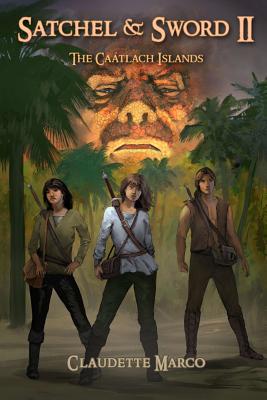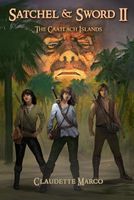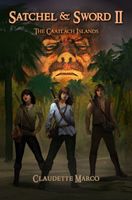- Welcome to FictionDB, Guest
- | My Account
- | Help

The Caatlach Islands — Claudette Marco

-
Published:
Mar-2014 -
Formats:
Print / eBook -
Series:
-
Main Genre:
Fantasy -
Pages:
276 -
Age Level:
08-12 -
Purchase:
-
Share:
The charge continues! In Satchel & Sword II: The Caátlach Islands, our heroes Nevaline, Cairine, and Mocsli begin their perilous search for the second fragment on the Caátlach Ocean. Having no other information about its location, they head north towards Carbry to find passage to the islands. But, their perils begin sooner than expected. Enemies of a human-kind, seeking power and coin, find Nevaline and her friends very valuable! Outnumbered, they are desperate to escape the clutches of these brigands of the Caátlach Ocean: the Kinlanders. Even if they find a way, what awaits them if they reach the second fragment? The UNDERDOGS: Spotlighting some of the world's ancient societies. In my books I have used three distinct cultures and their respective countries' landscapes as backdrops for specific territories and islands in the story. The country most prevalent in the books is SCOTLAND. I use its landscape as the backdrop for most of the Kordalis continent and most of the islands north of Kordalis in the Caátlach Ocean. I use certain aspects of its culture as details in the book like the sword Nevaline and the army uses is the Scottish CLAYMORE. In the second book, I utilize aspects of the MEXICA culture in Mexico (the Aztecs) along with Tenochtitlán's lowland hot climate and dry landscape. Finally, in the third book, I utilize aspects of the MONGOLIAN culture and its country's landscape. The Mexica Empire In the second book, I utilize the landscape and some cultural aspects of the Mexica Empire as it was in the 15th century. Learning about the Mexica Empire, one can certainly appreciate the value of understanding an ancient culture, one in which many people can trace back their origins. The Aztecs are the people who came from Aztlan the place of origin of the Aztec peoples. Aztec in Nahuatl means the people who came from Aztlan. The Aztecs who left Aztlan had wandered for many years and finally settled in Coatepec (Snake Hill in Nahuatl) near Tula. There the Aztecs built a city and lived for many years. When the Aztecs were in Coatepec, a dispute arose. Some of the Aztecs who followed Huitzilopochtli wanted to leave and some of the Aztecs who followed Coyolxauhqui (Huitzilopochtli's Sister) wanted to stay in Coatepec. In the battle that ensued the followers of Huitzilopochtli won and they changed their name to Mexicas. Mexicas, therefore, are the Aztecs that split from the other Aztecs in Coatepec. The Mexicas were led by Huitzilopochtli. They continued south and founded the city of Tenochtitlan or Mexico (what is now Mexico City) in Anahuac. Tenochtitlan in Nahuatl means the place of prickly pear cactus. Tenochtitlan was also refered to as Mexico. The Empire of the Mexicas was also called Mexico. Mexicas means people from Mexico. Hence, Mexicano or Mexican means the same as Mexica, people from Mexico. The City of Tenochtitlan was built in the middle of Lake Texcoco. Anahuac or the Valley of Mexico, was full of lakes at the time the first Europeans came to Mexico. Anahuac in Nahuatl means “near the water or sea.” Though not many of the indigenous Mexica people live today, the few that do have had a history centered on the subjugation of these peoples with occasional rebellions. One such rebellion was the 1994 Zapatista uprising in the Mexican state of Chiapas, which succeeded in obtaining new rights for indigenous people. Yet many more problems persist there today. Being part Mexican myself, I was proud to spotlight this culture, its history, and the geography of its origins in the second book. Read more at claudettemarco.com
Click on any of the links above to see more books like this one.


